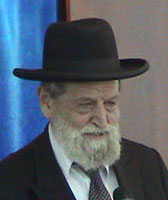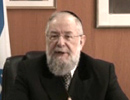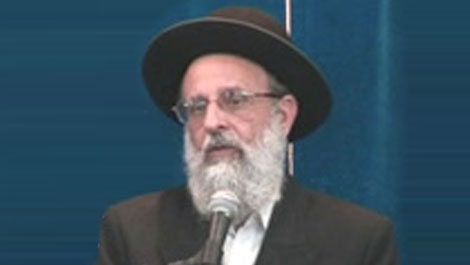Beit Midrash
- Sections
- Chemdat Yamim
- Ein Ayah
He saw that he was dragging out [the saying of the word "echad" in Kri’at Shema] to an extreme. He said to him: "Since you have declared His kingship above, below, and to the four directions of the Heaven, you do not need to do any more."
Ein Ayah: Knowing Hashem includes the following two elements: the true knowledge that is needed to straighten and elevate one’s actions; the knowledge that is needed to elevate the spirit itself with the knowledge of truth, the grandeur of the pleasantness of the lofty things related to the knowledge of Hashem.
The knowledge of Hashem that is for the needs of a positive mitzva, in this case, Kri’at Shema, is what is related to actions and their being done in the proper way. The attainments in the intellectual sphere, are connected to Torah study. The general foundation in the acceptance of the yoke of the Heavenly kingdom is that one should recognize that Hashem’s Hand has dominion over all, in all stages of life’s activities [represented by "above, below, and to the four directions of the Heaven"].
However, in order to know the value of the preparations and of the goals and how they are connected to each other, one needs to develop greatness of the spirit, above and beyond the value of the individual actions he takes. This goes beyond the realm of Kri’at Shema but rather the understanding of Hashem and His truth, which is transmitted to us through the truth of Torah.
The Significance of a Person’s Physical Position
(based on Ein Ayah, Berachot 2:6)
Gemara:
A prakdan [Rashi- someone lying on his back] should not read Kri’at Shema.
Ein Ayah: A person should train himself that all lofty learning and clear contemplation that comes to his soul should encourage him to awaken to do good things. It is very bad for one to make himself accustomed to being callous in regard to his study. In other words, he should not be in a situation where he thinks and contemplates and yet still does not budge from his involvement in physicality and earthly tendencies, even those that are antithetical to wisdom and justice.
When a person raises his eyes, he should have a spiritual experience, as the pasuk says: "Lift your eyes to the Heaven and see Who created all of this" (Yeshaya 40:26). He should be filled with emotions of the sacred and justice filled with life, with a desire to do that which is good and straight. Being in a position of prakdan, where he looks to the sky above yet his physicality is not moved and he is not aroused to move from his place, gives the mistaken impression that the goal of contemplation is not to straighten one’s path in accordance with the lofty values that his intellect grasps.
This inappropriate combination is very corruptive. It is a factor that weakens the main force in a person’s completeness, which is his intellect, preventing it from standing in its position and having the impact it is designed to have. It is generally negative to lie on one’s back. Kri’at Shema, though, is something whose main idea is to help realizations impact on one’s actions. This is why it includes both the acceptance of the Heavenly yoke and, in close proximity, the acceptance of the yoke of mitzvot. Therefore, it is particularly severe to lie on one’s back during Kri’at Shema.

The Need for the Spirit by the Letter of the Law
Various Rabbis | 5769

Different Types of Constructive Destruction
condensed from Ein Ayah, Shabbat 9:45
Various Rabbis | Sivan 27 5779

"Even the Bad is Just "Gradual Good"
Ein Aya Shabbat 5,18
Rabbi Ari Shvat | Adar 5783





















